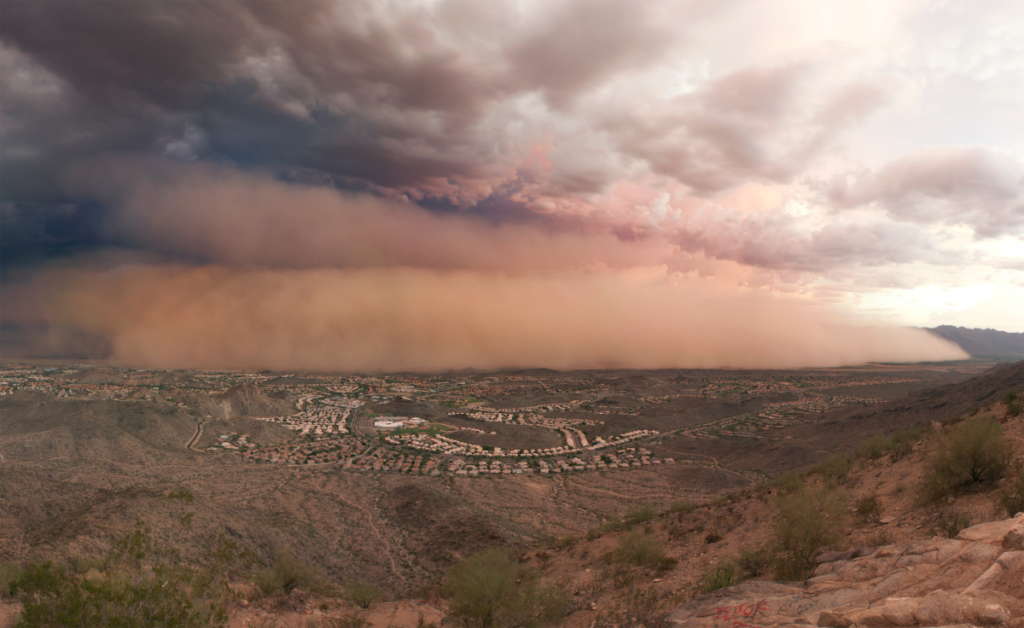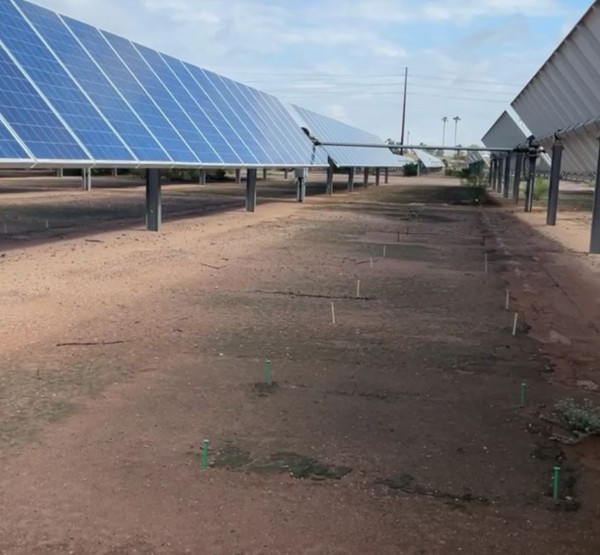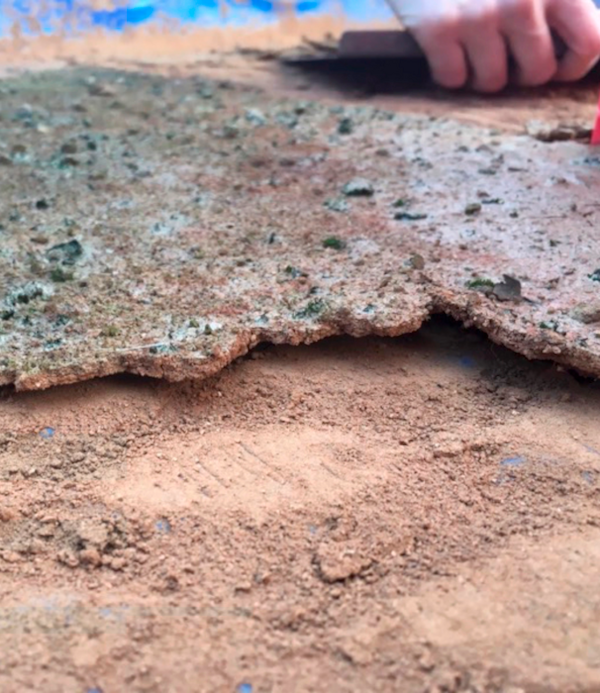The carpet of the desert. A charismatic crust. A suit of armor.
Biological soil crusts go by many names. A living ecosystem of cyanobacteria, lichen, moss, and algae, the crusts grow on arid soils on all continents, even Antarctica. Biocrust coats 12% of the planet’s surface and contains most of a desert’s ecological diversity in just the first few centimeters of soil.
But the crust is easily broken (even a footstep can crush it), and operations such as ranching and farming have destroyed crust around the world.
Phoenix feels the toll. Wind over fallow fields lofts dust hundreds of feet in the air, swallowing roads and blinding drivers. The dust also carries deadly fungi into the city.
“One wishes one would have thought of this a decade ago.”
Soil crust regrows naturally but can take years or even decades to do so. Now, a group of scientists has found that solar farms could help accelerate recovery. In a new study, the researchers claimed that solar farms within the Phoenix metro area could serve as biocrust nurseries for little cost; a large-scale effort could supply enough biocrust to cover most of the fallow farmland in surrounding Maricopa County within 5 years.

“One wishes one would have thought of this a decade ago,” said study author and microbiologist Ferran Garcia-Pichel at Arizona State University.
Beach Umbrellas
Biocrust cover tripled underneath solar panels, and its biomass doubled.
The experiment began at a small suburban solar farm in the Sonoran Desert on the edge of Arizona State University’s Polytechnic Campus in Mesa. Nestled between homes and a shuttered school, the small plant by Clearway Energy had operated for over a decade.
Garcia-Pichel and his collaborators visited the solar farm and discovered that biocrust had been naturally growing under the solar panels without any human involvement.
The scientists took photographs of the site following a rainstorm to compute the extent of the biocrust. Certain types of tiny photosynthesizing cyanobacteria that live in biocrust migrate to the soil surface after a rainstorm, creating easy-to-see green splotches that delineate biocrust from bare soil. Normally, cyanobacteria stay just a few tenths of a centimeter under the soil to protect themselves from extreme heat and abrasion.

The photographs revealed that biocrust cover underneath the solar panels was triple that of areas outside of the solar panels’ shadows. Biomass underneath the solar panels was also double that of neighboring soil.
Photovoltaic panels moderate the damaging ultraviolet rays of the Sun, said Roger Rosentreter, an ecologist at Boise State University who was not part of the research. The solar panels were acting like beach umbrellas, reducing the temperature and water evaporation from the soil.
But the most exciting results came next, said study colead Ana Mercedes Heredia-Velásquez, a Ph.D. student at Arizona State University. Could solar panels become nurseries for new biocrust?
Crustivoltaics
Scientists have experimented with regenerating biocrust in the laboratory or greenhouses for decades. Cultivated biocrust can be crumbled, sowed into bare soil, and wetted to grow healthy new crusts.
“With crustivoltaics, thousands of miles of dryland soils can be potentially restored in a relatively short period of time.”
But existing laboratory and greenhouse efforts are small scale; they’ve each transplanted only some hundreds of meters of biocrust. The fallow lands of Maricopa County stretch for more than 750 square kilometers (300 square miles).
But solar farms are plentiful in the U.S. Southwest.
Heredia-Velásquez and her collaborators cultivated cyanobacteria in the laboratory from existing biocrust at the solar farm. They then removed biocrust under a group of solar panels and inoculated 30 bare soil beds with cyanobacteria to see whether new biocrust would grow.
Over 2 years, biocrust grew to maturity under the solar panels without any intervention. In contrast, biocrust in plots without inoculation grew far slower, and the researchers estimated that biocrust would take 6–8 years to mature fully in those plots.
Hypothetically, solar farm biocrust could be harvested every 1–2 years, and 90% of the harvest could be used to regrow crust on bare land away from the solar farm. Ten percent of the harvest could be replanted, wrote the scientists.
The group dubbed the process crustivoltaics, an analogue of agrivoltaics, which appropriates solar panel land for agriculture.
“With crustivoltaics, thousands of miles of dryland soils can be potentially restored in a relatively short period of time,” said study colead and microbial ecologist Ana Giraldo-Silva at the Public University of Navarre in Spain.
A Question of Scale
Pitching large-scale pilot projects to solar farms in Maricopa County is the next step.
“Farming biocrusts under PV [photovoltaic] panels can be one step in our efforts to have a healthy planet,” Rosentreter said. Biocrusts suppress dust, fix carbon dioxide into the soil, and provide soil nutrients like ammonia for plants.
But because the study was a proof of concept, more than a few outstanding questions remain. Biocrust organisms depend on certain soil and climate conditions; a crust in warm-weather Phoenix could have a completely different microorganism population than a biocrust in a colder location a few hundred kilometers away. Ideally, land needing restoration would have nurseries nearby to grow the best match.

Microbiologist Nuttapon Pombubpa at Chulalongkorn University in Bangkok, Thailand, who did not participate in the study, praised the concept. But he warned against installing solar farms on protected land for their nursery potential. “We should be cautious about applying this technology to dry lands in natural habitats and national parks.”
Pitching large-scale pilot projects to solar farms in Maricopa County is the next step, Garcia-Pichel said. He welcomes solar farms or entrepreneurs to adapt the study’s approach freely.
—Jenessa Duncombe (@jrdscience), Staff Writer
30 May 2023: This article has been corrected to explain that all inoculated biocrust soil plots in the study were located underneath the solar panels rather than beside the panels.
This news article is included in our ENGAGE resource for educators seeking science news for their classroom lessons. Browse all ENGAGE articles, and share with your fellow educators how you integrated the article into an activity in the comments section below.


